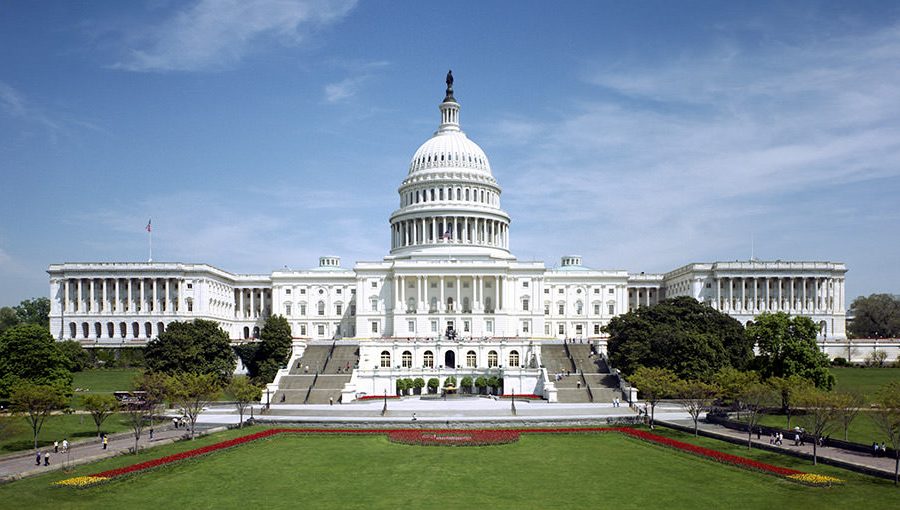House passes bill with $10 billion in NG911 funding, sends to Senate
House members this week overwhelmingly voted to approve a bill calling for $10 billion to fund the transition to IP-based, next-generation 911 (NG911) technology and the extension of the FCC’s spectrum-auction authority, sending the legislation to the Senate for consideration.
After debating H.R. 7624—the “Spectrum Innovation Act”—on Tuesday afternoon, the House postponed its vote on the measure until Wednesday evening. At that time, H.R. 7624 was grouped together with several other bills and approved in a 336-90 vote.
As amended at the committee level earlier this month, H.R. 7624 would extend the FCC’s authority to conduct spectrum auctions for 18 months beyond the current expiration date of Sept. 30. Given the importance of spectrum auctions to the U.S. economy and Congressional finances, extending the FCC’s auction authority by Oct. 1 is considered to be a “must-pass” item, according to Beltway sources.
Also included in H.R. 7624 is language that would require the FCC to auction at least 200 MHz of spectrum in the 3.1-3.45 GHz band. Proceeds from this auction would fill the funding gap in the “rip-and-replace” initiative to rid U.S. commercial networks of gear from China-based firms—notably, Huawei and ZTE—and would provide NG911 funding nationwide.
But the $10 billion for NG911 would not fully guaranteed, even if the bill is approved by the Senate and President Joe Biden. That’s because the NG911 funding is dependent upon the amount of money bidders spend to secure airwaves in the proposed 3.1-3.45 GHz spectrum auction.
As approved by a House subcommittee in June, the FCC and the National Telecommunications and Information Administration (NTIA) would have two years to identify at least 200 MHz of current federal spectrum in the 3.1-3.4 GHz band that the FCC could auction as exclusive or shared-use airwaves. The FCC would be required to conduct the auction within seven years of enactment of H.R. 7624.
Rep. Anna Eshoo (D-Calif.), a founding member of the NextGen 911 Caucus, said that seeing NG911 funding legislation pass the House is especially rewarding after beginning to work on the issue almost two decades ago, in the wake of the 9/11 terrorist attacks.
“Next-gen 911 ensures first responders can communicate securely and reliably,” Eshoo said in a prepared statement. “This technology will bring our nation’s 911 services into the 21st Century by allowing emergency communication centers to receive real-time location information, text messages, photos, and video from individuals at the scene of an emergency, and be able to share that information with first responders in the field to help them better respond.”
Rep. Richard Hudson (R-N.C.), another member of the NextGen 911 Caucus, echoed this sentiment.
“The time it takes to dial 911 can mean life or death, especially in rural communities throughout North Carolina. Yet much of our country continues to rely on 50-year-old technology to support this critical system,” Hudson said in a prepared statement. “Modernizing our infrastructure to next-generation 911 will improve the ability of our first responders to handle emergencies and save lives. I am proud this bipartisan legislation has passed the House and will continue to advocate for it until it is signed into law.”
Brian Fontes, CEO of the National Emergency Number Association (NENA), expressed support for the House vote and said his organization will work to see that federal grants are available to help fund the deployment of IP-based NG911 technology.
“NENA is pleased that the House passed this bi-partisan legislation to provide funding for Next Generation 911,” Fontes said in a prepared statement. “NENA looks forward to working with the Senate and the executive branch to ensure that America’s 911 systems have access to the grant monies necessary to deploy NG911 and help modernization of the nation’s 911 system into one that provides smarter, faster, more resilient emergency response for every American family and community.”
If enacted, the $10 billion for NG911 deployment would easily be the largest amount of money for 911 ever provided by the federal government, as 911 funding historically has been done at the state and local levels. This $10 billion figure would be within the range of $9.6 billion to $12.7 billion necessary for NG911 implementation, based on a cost study released by the 911 Implementation Coordination Office four years ago.
Darrin Reilly, president and CEO of Mission Critical Partners—the consulting firm that conducted the cost study—applauded the House support of NG911 funding legislation.
“This is long overdue,” Reilly said in a prepared statement. “We long have advocated that Congress provide support to NG911 that is similar to the support—$7 billion in seed money—that it provided to the nationwide public safety broadband network being built under the auspices of the First Responder Network Authority (FirstNet). The House’s passage of this bill brings the 911 community closer to that event.”
While public-safety officials would welcome any federal funding to help pay for the transition to NG911, many have stated that a more accurate figure of the money needed is $15 billion, particularly when cybersecurity and training initiatives are considered. In addition, that $15 billion figure was identified before the U.S. economy began experiencing high levels of inflation and notable supply-chain and resource woes within the tech industries that would be needed to deploy NG911.
Another concern raised by some in the public-safety community revolves around when the funding would be available for NG911 projects.
Under the current language of H.R. 7624, NG911 funds would not be available until after the FCC conducts its 3.1-3.45 GHz auction. The FCC and NTIA would have two years simply to identify the spectrum that would be available to bidders. After that, auction rules would need to be established with time to let potential bidders identify spectrum targets and secure financing prior to the auction being conducted.
Only after the auction is completed and proceeds determined would the NTIA be able to know how much—if any—money would be available for NG911 deployments and establish a grant program to distribute the funds.
Given all of these steps that need to be completed, some public-safety representatives have expressed concern that NG911 funding might not be available until at least 2026 or 2027—and there would be no guarantee that the full $10 billion proposed in the legislation would be accessible at that point, depending on the outcome of the auction.
Mission Critical Partners’ Reilly noted this issue in his prepared statement.
“Spectrum auctions and rulemaking tend to take years to execute—indeed, this bill grants the Federal Communications Commission up to seven years to conduct this auction,” according to Reilly. “The 911 community doesn’t have seven years, nor does the nation—NG911 is needed now.”
With this in mind, several observers of the public-safety community have wondered whether the language in the legislation could be altered in a manner that guarantees at least a portion of the NG911 funding immediately, and then the U.S. Treasury would be repaid as the spectrum-auction proceeds become available.
Such an approach would not be unprecedented in the public-safety realm. When the FirstNet Authority was established in 2012, it quickly was granted a $2 billion “loan” from the U.S. Treasury to fund the organization’s operations in its early years, until there were enough spectrum-auction proceeds to fully fund the $7 billion envisioned by Congress.














